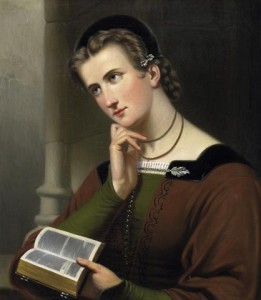So, I was reading the latest edition of Viewpoint and came across a review of India Dark, Kirsty Murray’s new novel. This book has been on my To Read list ever since I heard of it, because a) it’s by Kirsty Murray, b) it’s set in India and c) it’s historical fiction based on a fascinating true story, all of which suggest it will be an excellent read. The review, by Tony Thompson, was very positive, but then, towards the end, he had this to say:
“It would be tempting to suggest this is a book for girls but I think that would diminish a novel that is told with such skill and precision.”
 Yep. You see, books told with ‘skill and precision’ are wasted on girls. To give such a book to girls would ‘diminish’ the book, because, as everyone knows, girls can’t cope with complex plots, rich language or vividly-described settings. Only boys have the vocabularies, reading comprehension skills and attention spans that are required to read and understand a well-written novel.
Yep. You see, books told with ‘skill and precision’ are wasted on girls. To give such a book to girls would ‘diminish’ the book, because, as everyone knows, girls can’t cope with complex plots, rich language or vividly-described settings. Only boys have the vocabularies, reading comprehension skills and attention spans that are required to read and understand a well-written novel.
Yes, I am being sarcastic, Mr Thompson. But what’s that you say?
“. . . astute English teachers will recognize that, despite the female narrators, this is a book that will appeal strongly to the boys in the class . . .”
So, boys ought to be given a chance to read this book, despite the fact that it contains characters who are (ugh!) girls. But only ‘astute’ English teachers will recognise this, because apparently it takes a huge amount of wisdom to see that boys might benefit from learning about the other half of the human population.
Of course, English teachers, astute or otherwise, don’t seem to have any problem making girls read books about boys. When I was in senior high school (a quarter of a century ago), only one female writer existed – Jane Austen. There were no female poets, playwrights, short story writers or contemporary novelists in the English-speaking world, according to our syllabus. The current list of texts for New South Wales senior high school students shows some improvement, but in junior high school, texts about boys still predominate. The thinking seems to be that, as boys are more likely to be reluctant and/or poor readers, they must always be indulged at the expense of girls. Girls will read anyway. Besides, it doesn’t matter so much about their academic skills, because they don’t have to get a job – they’ll get married and be supported by their husband. (Don’t laugh – this is what I was told by the parents of one of my students, a girl who’d just been identified as having learning difficulties).
I understand that teachers need to consider many issues, including themes and language, when they’re selecting books for their students. I just don’t see why the gender of the characters is only an issue when the characters are female. Teachers don’t often say, ‘I can’t give this book to my co-ed class – the narrator is a boy!’
It’s depressing enough that the Children’s Book Council awards so often seem to privilege stories about boys over stories about girls. But do we also have to read patronising reviews about ‘girl’ books that are so good, even boys might like them? That’s insulting to both girls and boys.
EDITED TO ADD: Two pages on in Viewpoint is yet another male reviewer who has interesting views on girls and books. Here’s Malcolm Tattersall reviewing Kate Elliott’s alternate history/fantasy novel, Cold Magic:
“One aspect of Cold Magic will be a problem for half its potential readers and a strength for the other half: it is intrinsically a girls’ book. That is apparent on the surface level in the protagonist’s clothes-consciousness and romantic crushes, but it also pervades deeper levels, in the greater significance accorded to relationships than to deeds and Catherine’s ongoing, if unarticulated, struggle for self-determination in a male-dominated world.”
I haven’t read the book, but . . . really? Boys never have ‘romantic crushes’? They never care about what they’re wearing? They have no interest in relationships? They never struggle for their own self-determination? And they have no interest in reading about someone else’s struggle for self-determination?
You’d think boys and girls belonged to completely different species, reading this. Maybe I just give teenage boys more credit than these reviewers do.
UPDATE: Just A Girls’ Book, Redux



